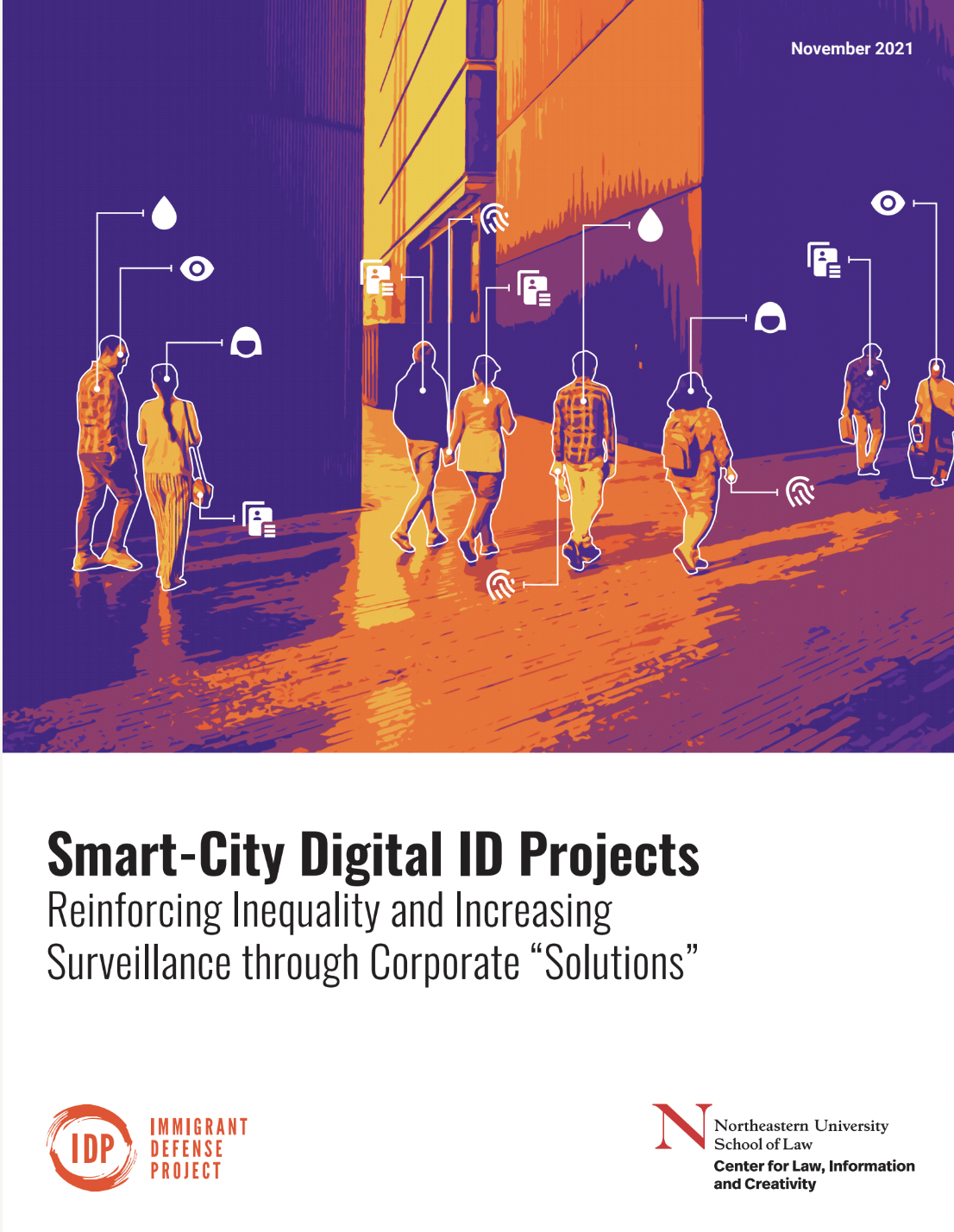
This report, “Smart-City Digital ID Projects: Reinforcing Inequality and Increasing Surveillance through Corporate ‘Solutions'” published by IDP’s Surveillance, Tech & Immigration Policing Project and Northeastern University’s Center for Law, Information & Creativity, examines the problem space by exploring an emergent form of smart-city projects: digital identification (“digital ID”) that seeks to integrate financial services/products, transit payment functions, and access to government services. The report details a contested effort to pursue a digital ID project in New York City. Advocates fought off an ill-conceived plan to add financial services and smart-chip technology to the City’s municipal ID, the IDNYC.
Learn more about our campaign to preserve the IDNYC.
Report: Smart-City Digital ID Projects
“Smart City” is an often used yet ill-defined buzzword that is employed to describe or refer to a range of technology-based projects, solutions, or services to address abstracted problems improve or modernize existing government services or infrastructure; or promote policy priorities or societal goals (e.g., sustainable development or internet accessibility). These projects operate in a contested space that requires collaboration between the public and private sectors. Though often narrated as the customer or beneficiary of smart-city projects, local governments must provide access to the city’s key assets and resources for these efforts to advance. This can mean providing the private sector access to government data (including information about residents), infrastructure, public goods or services, and special permissions or privileges. In return, the private sector is generally expected to codevelop or provide “smart” products, platforms, or services. These can include a range of information and communication technologies like sensors, apps, algorithms, hardware, and software that can be integrated or exist independently.
Demystifying Smart Cities
Smart City” is an often used yet ill-defined buzzword that is employed to describe or refer to a range of technology-based projects, solutions, or services that aim to address abstracted problems, improve or modernize existing government services or infrastructure, or promote policy priorities or societal goals (e.g., sustainable development or internet accessibility).
IDNYC: A Financial Services and Smart Cities Case Study
In 2015, New York City implemented a new municipal identification program: the IDNYC. The aim of the IDNYC was to provide a safe, accessible, and government- issued ID card for all New Yorkers, including immigrant, homeless, and other populations that often faced barriers when attempting to acquire other forms of government-issued identification.
Digital IDs and Smart Cities
Digital identification systems—hereinafter referred to as digital IDs—often take the form of centralized national ID programs that combine personal information, existing government data, and biometric data such as fingerprints, face scans, or iris scans to authenticate identification.
A Pathway Forward
This report offers best practices and policy recommendations that are a starting point for actions public and private actors can take to improve the social and political (though not necessarily technological) aspects of smart-city project development and implementation.
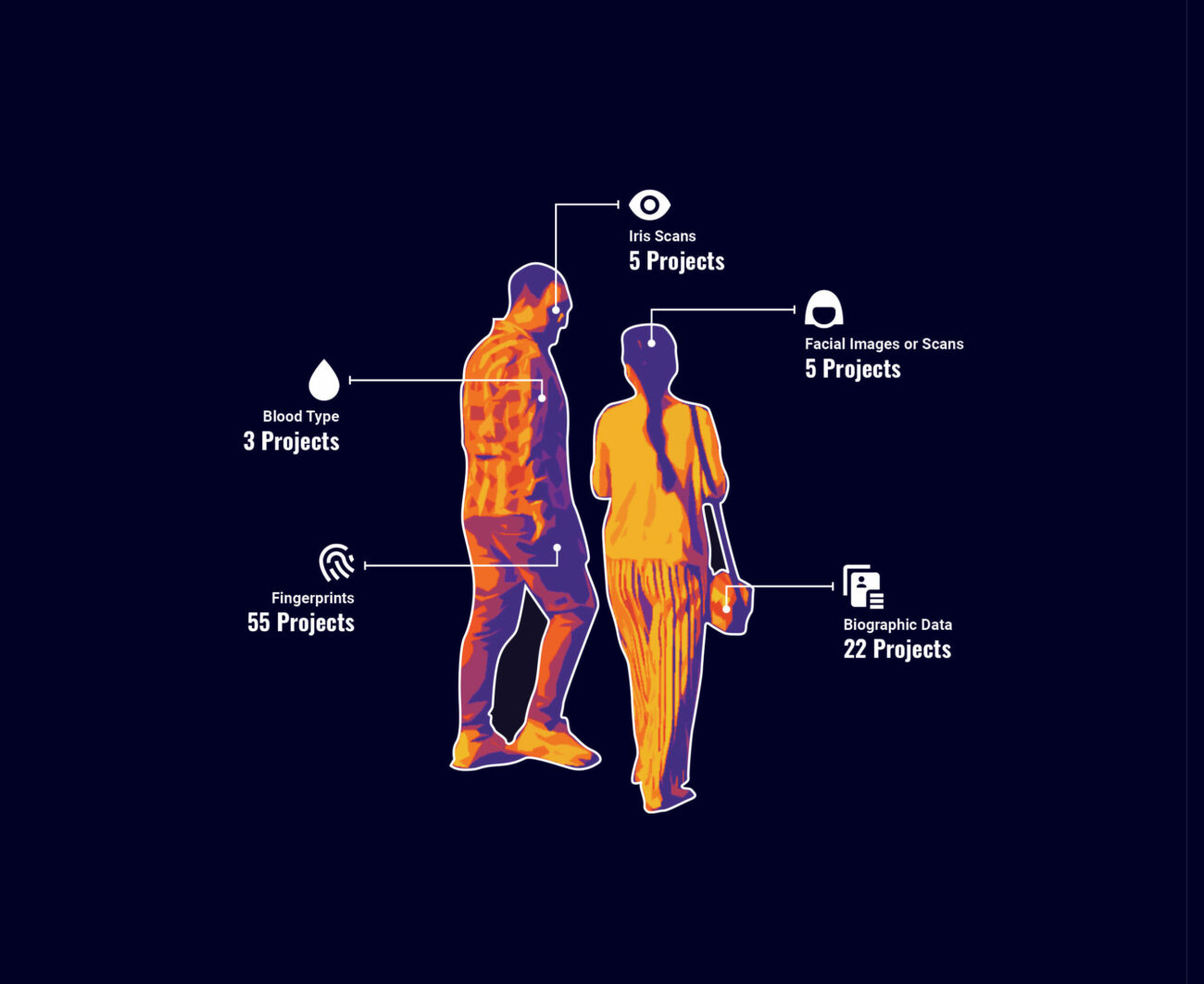
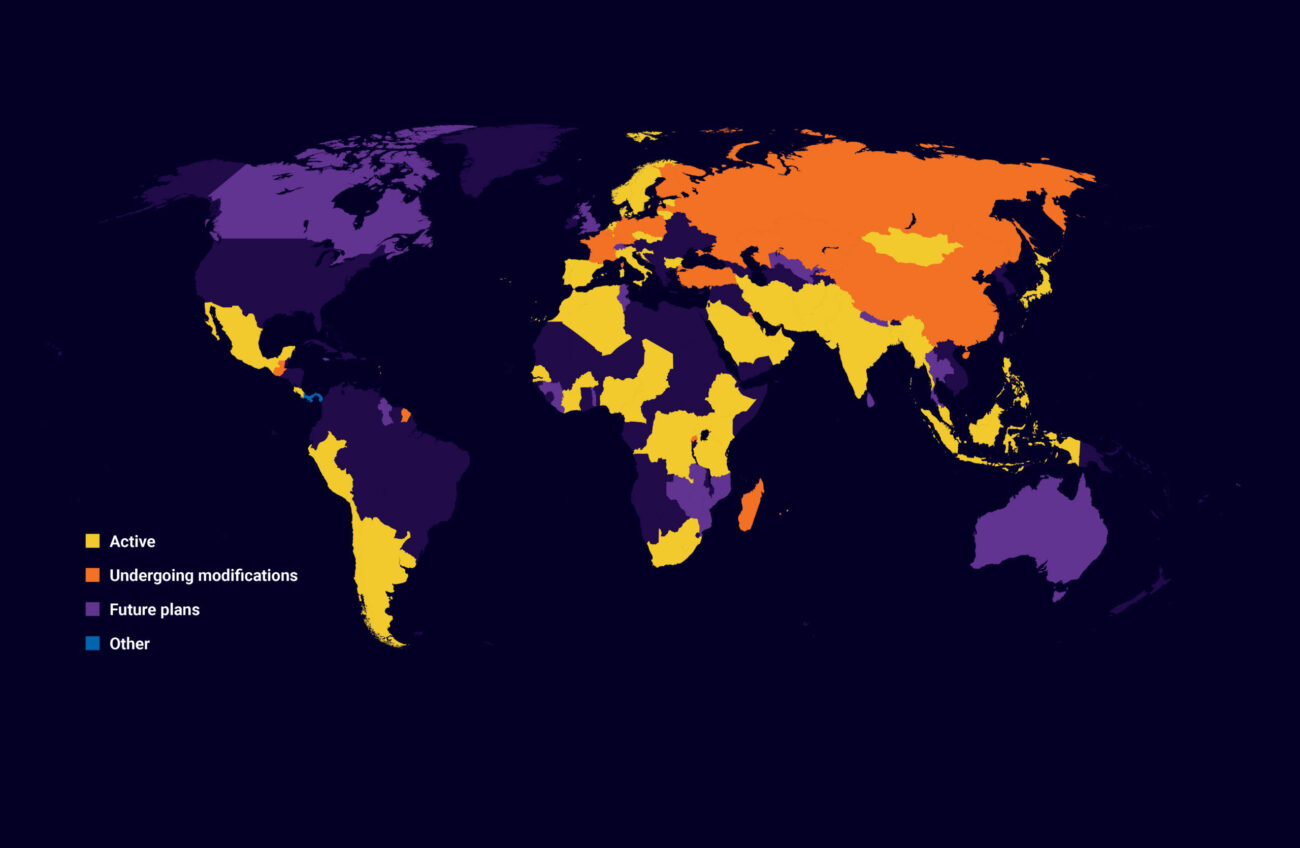
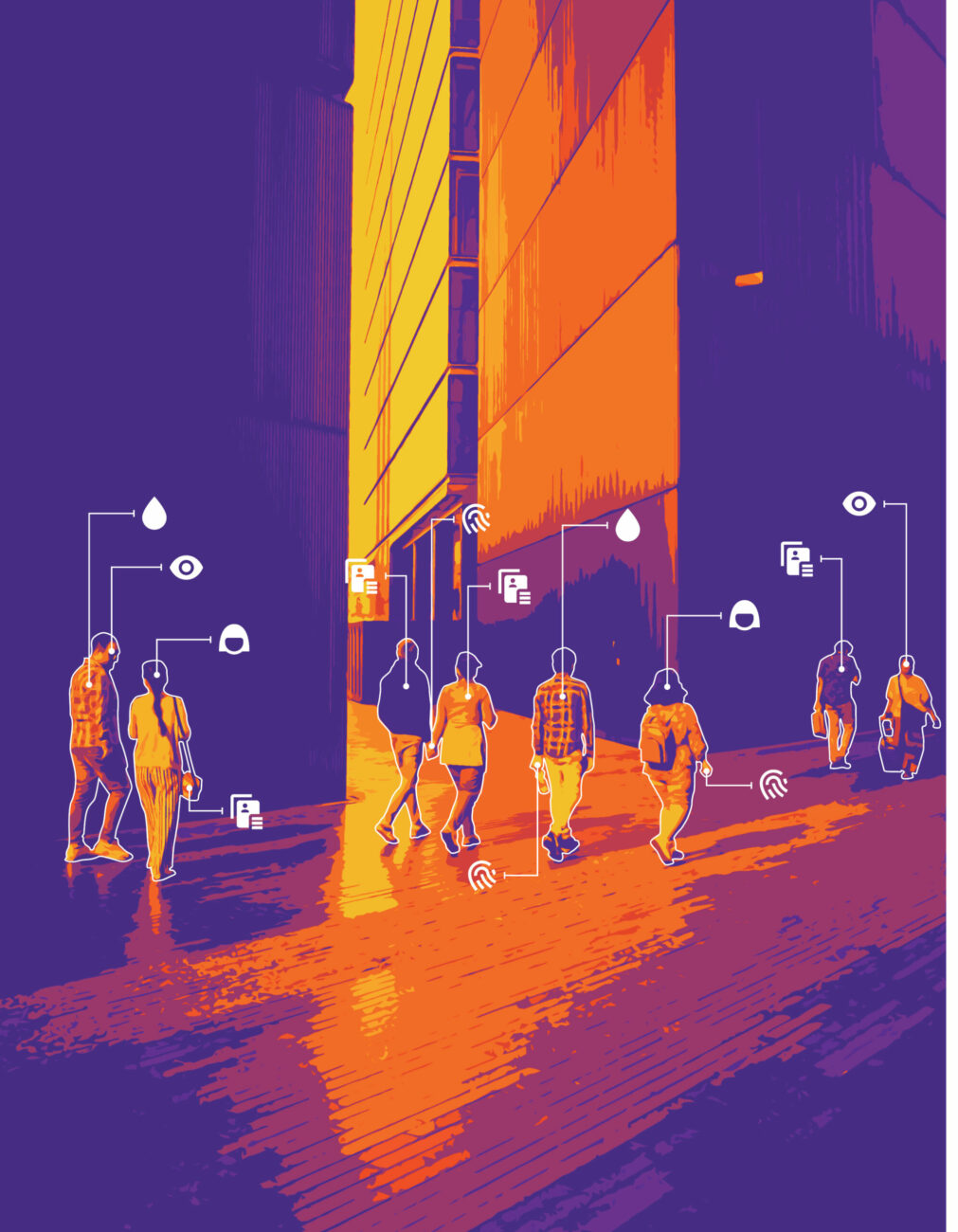
EXECUTIVE SUMMARY
“Smart City” is an often used yet ill-defined buzzword that is employed to describe or refer to a range of technology-based projects, solutions, or services to address abstracted problems improve or modernize existing government services or infrastructure; or promote policy priorities or societal goals (e.g., sustainable development or internet accessibility). These projects operate in a contested space that requires collaboration between the public and private sectors. Though often narrated as the customer or beneficiary of smart-city projects, local governments must provide access to the city’s key assets and resources for these efforts to advance. This can mean providing the private sector access to government data (including information about residents), infrastructure, public goods or services, and special permissions or privileges. In return, the private sector is generally expected to codevelop or provide “smart” products, platforms, or services. These can include a range of information and communication technologies like sensors, apps, algorithms, hardware, and software that can
be integrated or exist independently.
Because of their potential, smart-city projects have garnered widespread support, interest, and investment from all levels of government, a range of industries (not limited to the technology sector), philanthropies, university research labs, and curious entrepreneurs. Yet a growing body of critical scholarship and public advocacy has drawn attention to the fact that the promises of smart-city projects remain illusory. Furthermore, the risks or tradeoffs associated with many of these projects are not adequately assessed or communicated to the public.
This report examines this problem space by exploring an emergent form of smart-city projects: digital identification (“digital ID”) that seek to integrate financial services or products, transit payment functions, and access to government services.
Section I explores how smart-city projects are pursued and why they often fail. Though smart-city projects vary greatly, this section highlights common flaws and missteps in current projects or proposals.
Section II explores the growing global digital ID market, highlighting the varying interests underlying the explosion of digital identity systems. Case studies highlighted in this section show that these efforts raise serious concerns about governance, due process, exclusion, privacy, surveillance, and equity. To illustrate how digital IDs intersect with smart-city initiatives, this section includes a focus on Mastercard, a key player in this area.
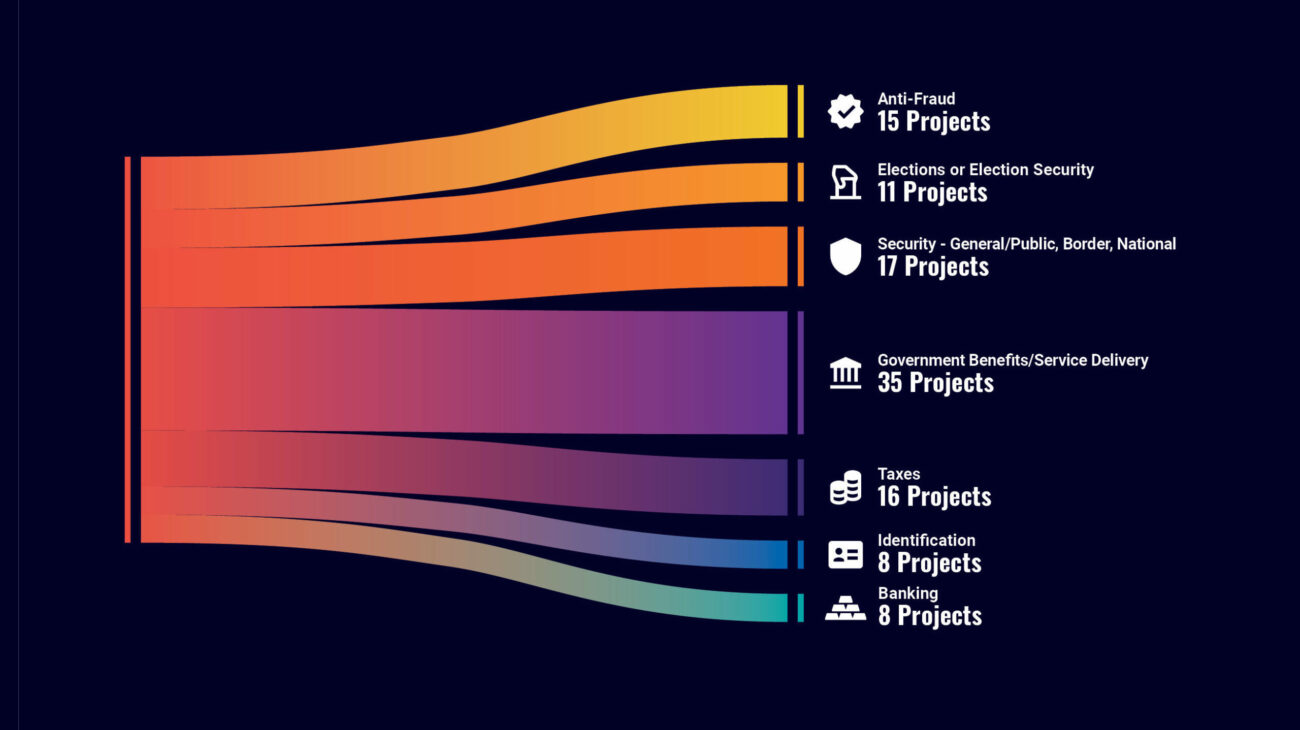
Stated Purposes or Goals of Digital ID Projects. Though the stated goals of digital-identity management vary, these programs typically aim to create a single digital identity—a unique identification number—for residents (or sometimes only citizens) in an area or a country in order to grant access to particular services or rights. This graphic highlights some of the common stated goals or purposes of current or planned digital ID projects.
Section III details an effort in New York City to pursue a Digital ID project. This case study reveals entanglements between the private and public sector that led to a contested attempt to integrate a financial services smart chip into the City’s municipal ID card, the IDNYC. Proponents marketed the effort as a means to provide financial services to underserved communities, but ignored the actual root causes of uneven access to financial services along with the inherent risks of the project, i.e. increased tracking, regulation, and surveillance of marginalized communities.
Section IV highlights best practices and policy recommendations that are a starting point for actions public and private actors can take to improve smart-city project development and implementation.
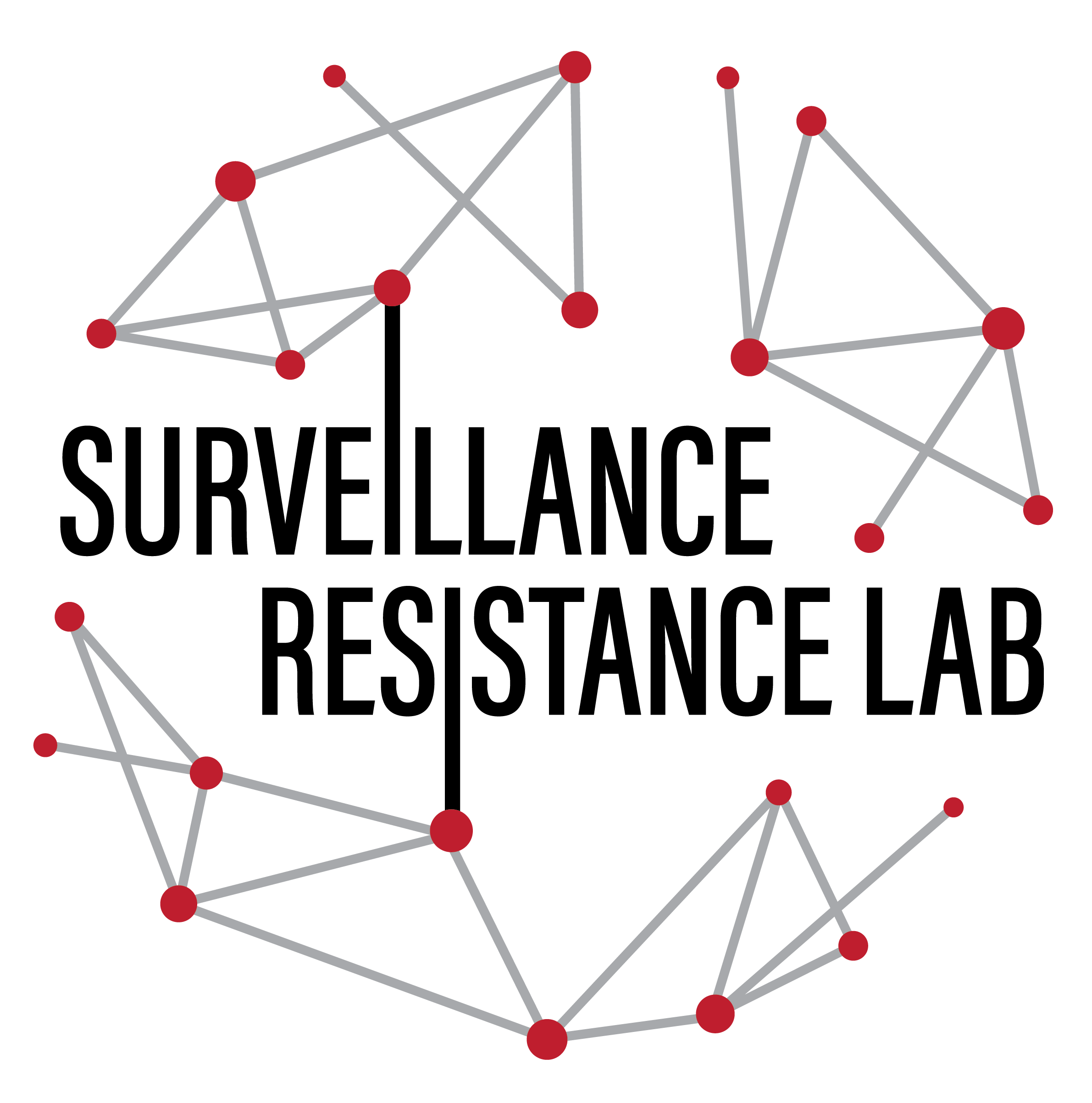

About this report: The research and writing of this report was led by Mizue Aizeki and Rashida Richardson (Assistant Professor of Law and Political Science, Northeastern University) as part of the Surveillance, Tech and Immigration Policing project of the Immigrant Defense Project. This report was created with the support of the John D. and Catherine T. Macarthur Foundation. The authors received research support from Rutgers Law School students Ashley Dabb and Taylor Farrow, as well as from Princeton University students Amber Rahman, Ashley Nurse, and Sarah Elkordy through the Ida B. Wells Just Data Lab. Empower LLC provided research and writing support on the Mastercard business plan and the IDNYC timeline. Deyanira Del Río from the New Economy Project contributed research and writing support for the IDNYC case study. The authors would also like to thank Camelia Manring, Betsy Plum, and Teresa Perosa from the Engine Room for providing research and feedback on portions of the report.
Preferred Citation: Mizue Aizeki & Rashida Richardson, eds., Smart-City Digital ID Projects: Reinforcing Inequality and Increasing Surveillance through Corporate “Solutions”, New York, NY: Immigrant Defense Project, 2021.